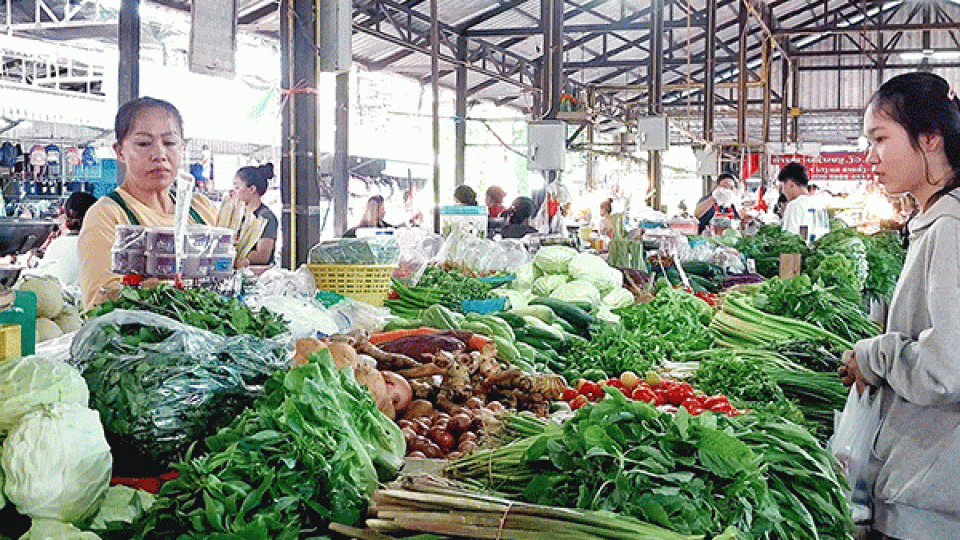September 5, 2024
VIENTIANE – Laos continues to grapple with economic challenges due to an increase in commodity prices and the rising inflation rate in recent months.
The month-on-month inflation rate was registered at 2.2 percent in July and at 1.1 percent in August, while the year-on-year figure was 26.10 percent for July and 24.3 percent for August, according to the latest updates on the website of the Lao Statistics Bureau.
In addition, the month-on-month consumer index for July was recorded at 239.80, slightly lower than the figure of 242.5 in August.
The categories of products that contributed to the inflation rate include healthcare products and medicines, whose prices increased by 37.6 percent, followed by accommodation, water supply, electricity and cooking gas, whose cost increased by 34.9 percent.
Costs in the restaurants and hotels category increased by 33.2 percent, the household appliance category increased by 31.6 percent, and the for food and non-alcoholic beverages category increased by 22.5 percent.
If compared to the figures for July, the month-on-month inflation rate decreased by 1.1 percent in August.
The product category that changed a lot is the restaurants and hotels category, where the rate increased by 2.9 percent.
The most notable was the increase in the price of khao piek (rice noodles), by 6.2 percent, while the price of beer increased by 6 percent, and grilled chicken by 4.1 percent.
The figure for the education category increased by 2.3 percent, especially with the cost of school uniforms going up by 4 percent, textbooks by 3.6 percent, and tuition fees for extra classes by 2.4 percent.
In the food and non-alcoholic beverages category, the price of dill rose by 19.8 percent, mint by 18.8 percent, green chilli by 17.9 percent, chicken eggs by 5.9 percent, and the pork by 3 percent.
The cost of home appliances increased by 2.2 percent, the price of beds by 8 percent, air conditioners by 5.9 percent, washing powder by 4.3 percent, and light bulbs by 9 percent.
Inflation in Laos remains high because domestic production continues to be weak. Authorities need more time to promote domestic production while simultaneously tackling the fluctuation of exchange rates.
As part of its efforts to efficiently manage the rising prices of goods and the inflation rate, the government has formed a special taskforce to monitor and seek solutions to economic issues.
The government is also encouraging people to cooperate with relevant sectors, especially by using the Lao kip, and the holders of foreign currencies have been advised to exchange money at authorised banks.


